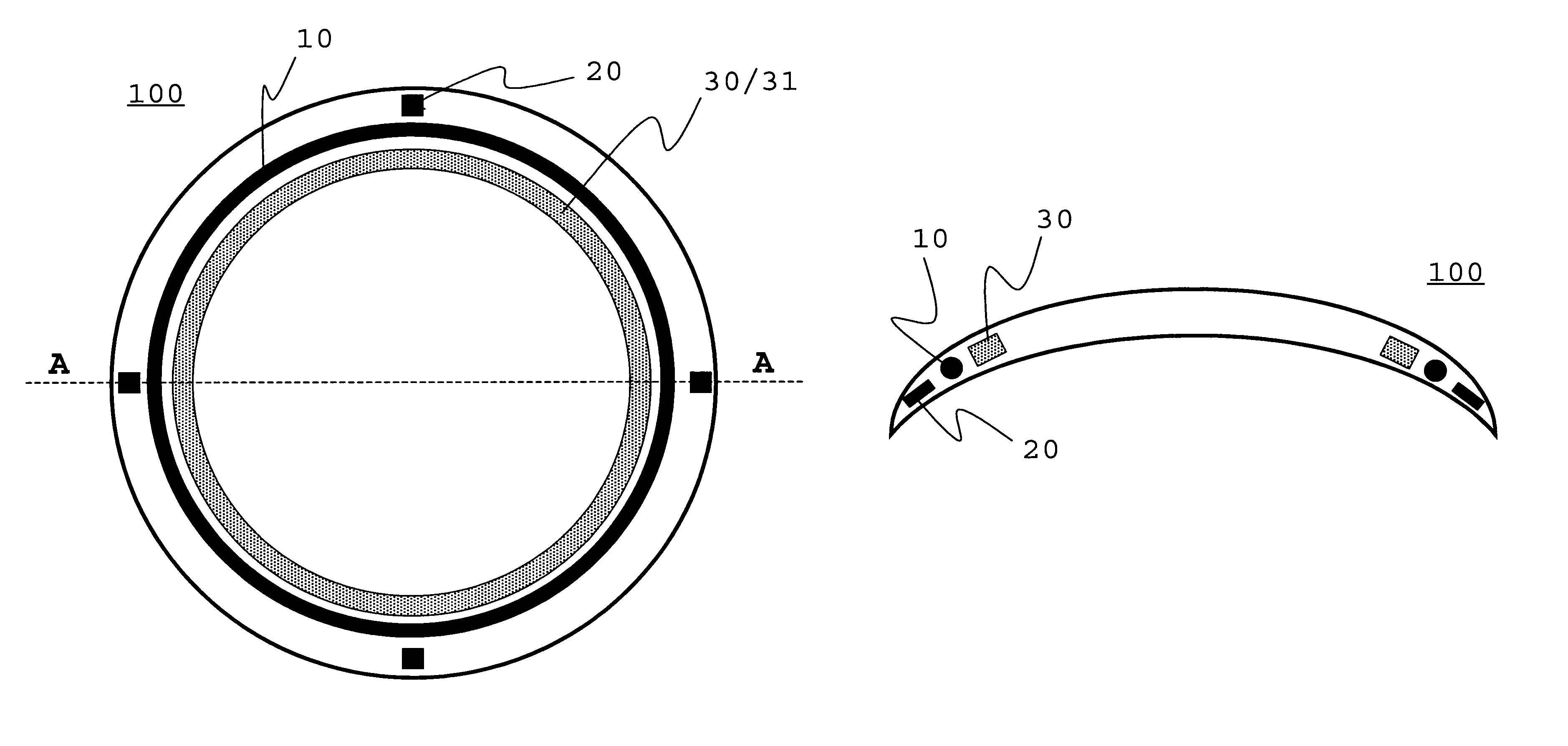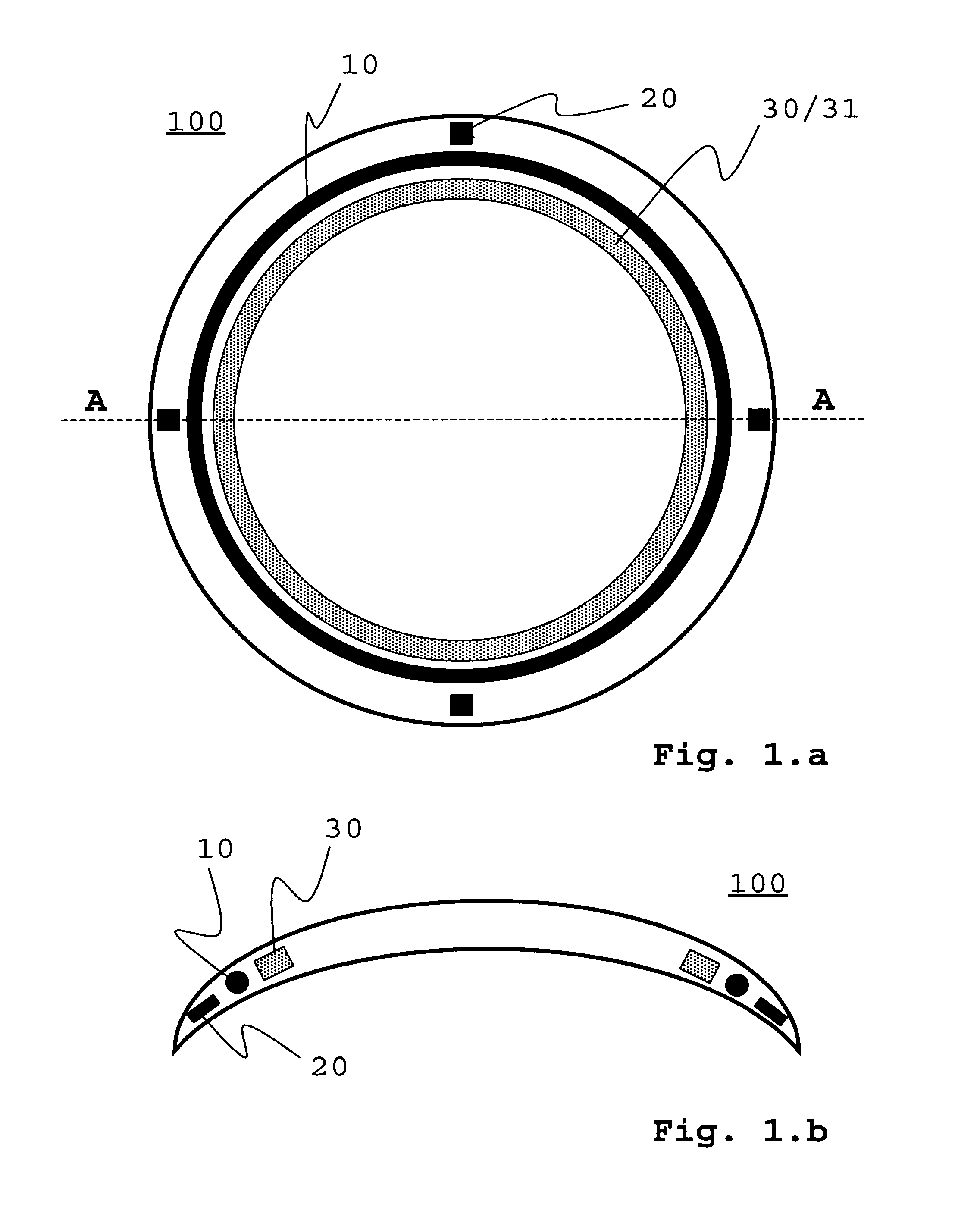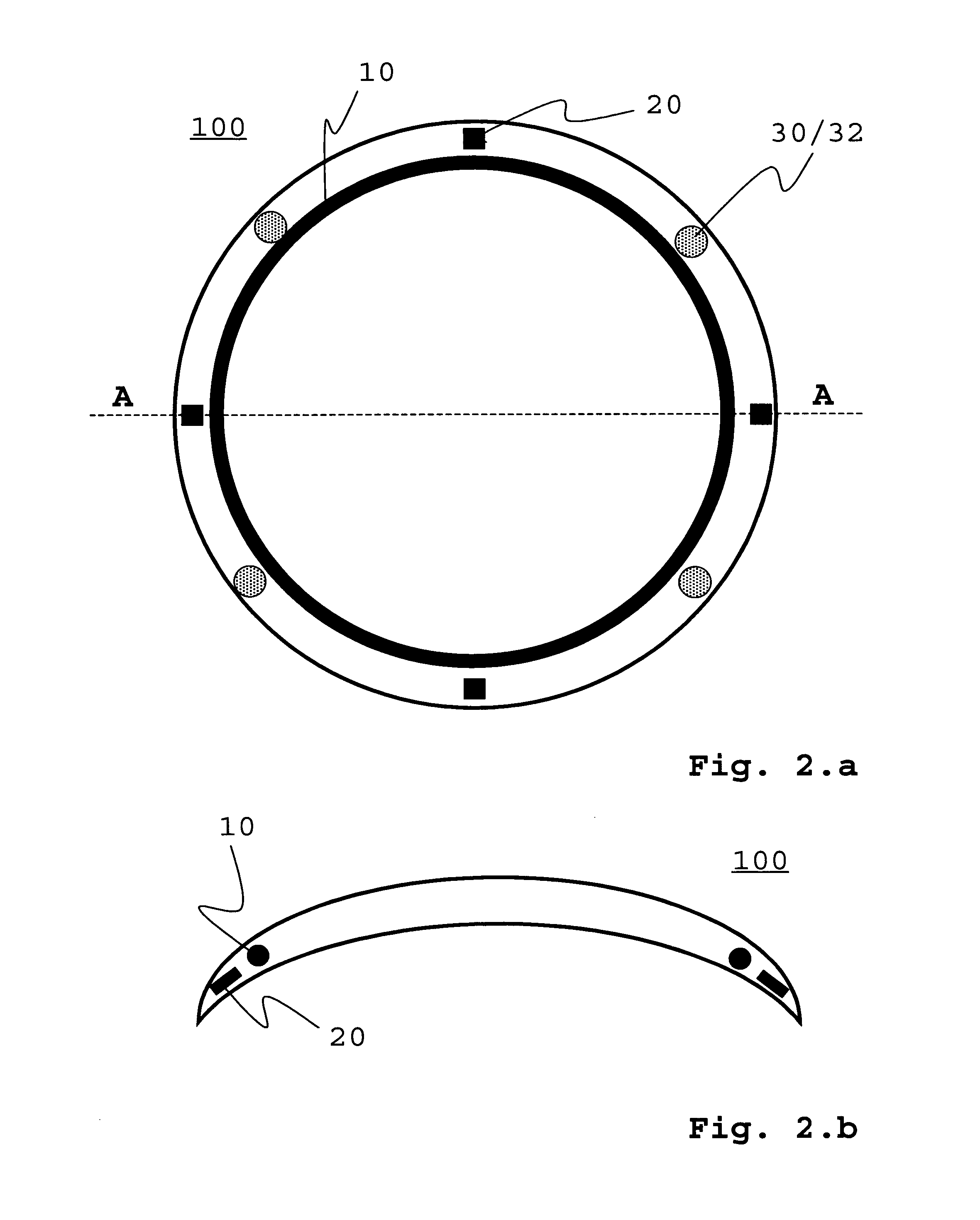Lens with variable refraction power for the human eye
a technology of refraction power and human eye, which is applied in the field of human eye refraction power, can solve the problems of affecting the the eye is distracting, and the multi-focal glasses are unsuitable for many eyewearers, so as to achieve enhanced refraction power of the lens
- Summary
- Abstract
- Description
- Claims
- Application Information
AI Technical Summary
Benefits of technology
Problems solved by technology
Method used
Image
Examples
first embodiment
[0020]the present application claims a lens, especially with variable refraction power, comprising the following components:[0021]means for adaptation of the refraction power, especially by a shift of the lens curvature, as reaction to a control signal,[0022]at least one position locator,[0023]means for detection of a relative position of the position locator with respect to at least another position locator which is arranged on another lens, in particular such that an eye orientation is determinable or determined from the detected relative position of the position locator with respect to the other position locator,[0024]means for generation of a control signal in order to adapt the refraction power of the lens to the detected relative position, in particular such that a required refraction power or accommodation for the determined eye orientation is provided or can be provided, and[0025]at least one device for power supply of at least one part of the components of the lens.
[0026]Al...
second embodiment
[0058]Furthermore, the means for adaptation of the refraction power are embodied to a change of the refractive index of the lens. The change of the refractive index is preferably achieved essentially without changing the curvature of the lens. According to a possible variant, so-called electro-optical materials effect this change. The refractive index of such electro-optical materials can be influenced for example by an electric field, by a magnetic field and / or by an electromagnetic field. A defined refractive index distribution within the lens can thus be adjusted. The electro-optical material can be provided for example as electro-optical polymer. Changing the density of a compressive fluid provides another possibility for the change of the refractive index.
[0059]The adaptation of the refraction power results as a reaction to the control signal. The control signal comprises information concerning the necessary refraction power, as for example the lens curvature. The control sign...
third embodiment
[0084]FIGS. 3.a and 3.b schematically show exemplary the lens according to the invention in a top view and in a sectional view.
[0085]FIGS. 4.a and 4.b schematically depict exemplary a forth embodiment of the lens according to the invention in a top view and in a sectional view.
PUM
 Login to View More
Login to View More Abstract
Description
Claims
Application Information
 Login to View More
Login to View More - R&D
- Intellectual Property
- Life Sciences
- Materials
- Tech Scout
- Unparalleled Data Quality
- Higher Quality Content
- 60% Fewer Hallucinations
Browse by: Latest US Patents, China's latest patents, Technical Efficacy Thesaurus, Application Domain, Technology Topic, Popular Technical Reports.
© 2025 PatSnap. All rights reserved.Legal|Privacy policy|Modern Slavery Act Transparency Statement|Sitemap|About US| Contact US: help@patsnap.com



